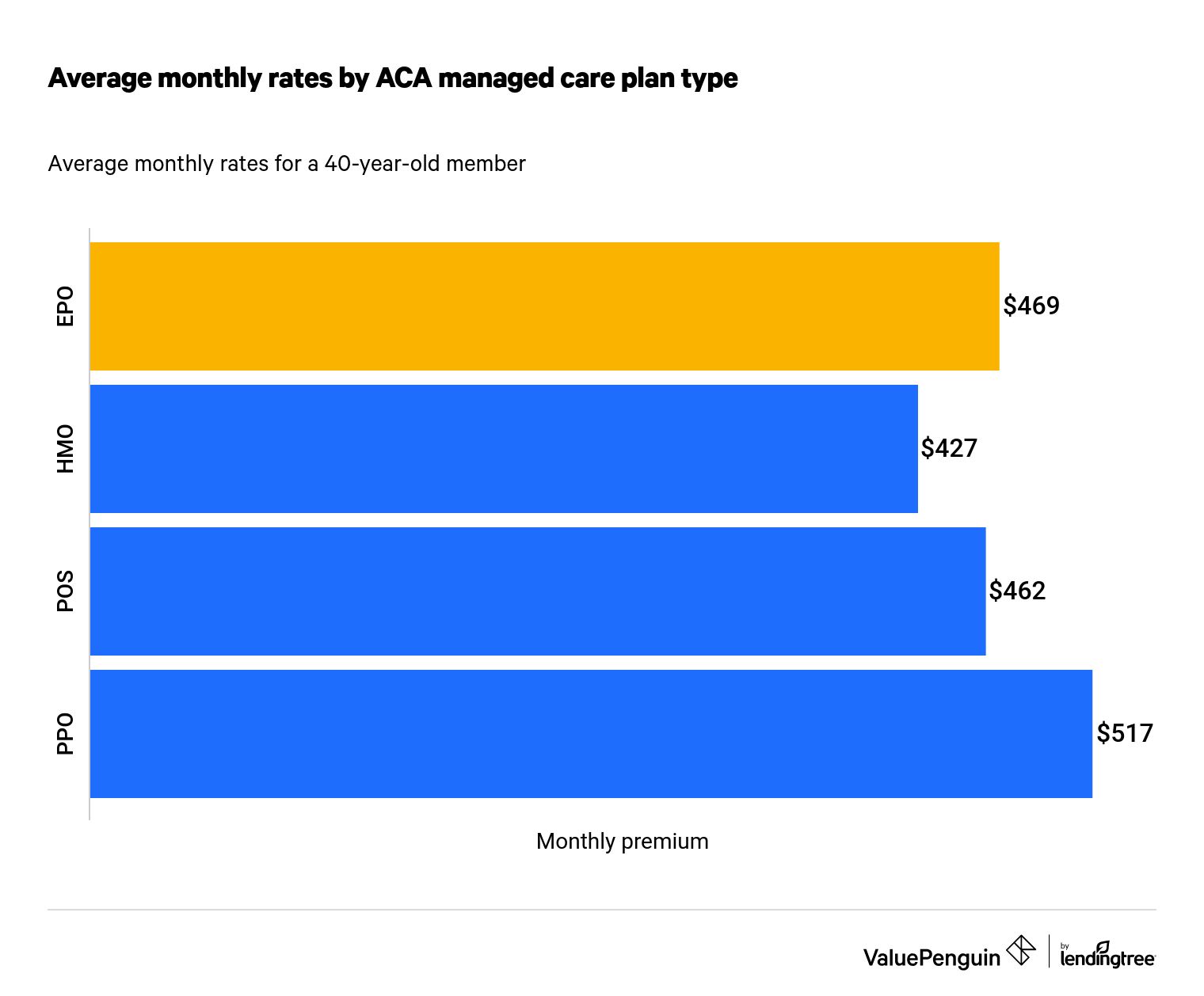EPO Health Plans: What Are They?
Find Cheap Health Insurance Quotes in Your Area
An exclusive provider organization (EPO) insurance plan contracts with a network of doctors, hospitals and other health professionals to provide services to its subscribers. An EPO allows for in-network specialty care without the need for a referral, but policyholders are responsible for payment of all out-of-network services except in emergencies.
What is an EPO health plan and how does it work?
An exclusive provider organization (EPO) insurance plan is a type of major medical insurance that provides minimum essential coverage for illness, hospitalization and preventive health care. As managed care programs, EPOs contract with a network of primary care and other providers to deliver health services to their members.
EPO insurance manages costs by limiting care to doctors, specialists or hospitals within the plan network. If you use an out-of-network provider, you are responsible for the full cost, except in emergency situations.
While an EPO health plan requires the use of network providers, you don't need referrals for specialist visits. However, you may be required to get prior authorization with EPO health insurance. This means that the EPO must review and approve the specialty visit first. We recommend that you contact your insurance company or health care provider to ask about coverage.
EPO advantages:
- Mid-level premium costs: EPO premiums are generally higher than health maintenance organization (HMO) premiums but lower than preferred provider organization (PPO) plan rates.
- No PCP required: You do not need to select a primary care provider (PCP) to coordinate your health care needs.
- Access to specialty care: No specialist referrals are needed. However, you must use in-network providers and may need to obtain prior authorization for specialty care.
EPO disadvantages:
- Network limitations: Except in emergencies, you must receive care within the EPO network. You are responsible for the full cost of all other out-of-network services.
- Other out-of-pocket costs: While EPO premiums may be lower compared to other plan types, your EPO may charge deductibles and coinsurance. HMO and point of service (POS) plans generally do not assess deductibles.
EPO vs. other managed care plans: How are they different?
EPO health insurance and other managed care plans differ when it comes to provider selection, flexibility and cost. With EPO and HMO plans, you must receive medical care within the plan's provider network. However, EPOs differ from HMOs in that they do not require referrals for specialty services. PPO and POS plans allow you to go outside the plan network, but you may be required to pay out-of-pocket fees such as deductibles, coinsurance or both. You may also pay a higher premium for network flexibility compared to HMO and EPO plans. We’ve compiled a brief list of features many people consider when comparing the four managed care plan options, including cost and access to care.
EPO | HMO | PPO | POS | |
|---|---|---|---|---|
| Average premium | Mid-level | Lower | Higher | Mid-level |
| Low or no deductible | X | ✓ | X | ✓ |
| Nonemergency out-of-network services covered | X | X | ✓ | ✓ |
| Specialist visits allowed without a referral | ✓ | X | ✓ | X |
EPO vs. HMO insurance
EPOs require use of network providers for routine care, similar to HMO plans. The main difference is that with an HMO, you must choose a PCP to coordinate your medical care and refer you for specialist visits. With an EPO, you can see specialists without a referral. However, you should first check to be sure the provider is in your EPO network and whether prior authorization is required by your plan.
EPO vs. PPO insurance
Like a PPO, an EPO does not require specialty referrals. However, while a PPO generally provides some coverage for out-of-network services, an EPO covers only in-network care, except in emergencies. Both EPOs and PPOs usually charge a deductible, which is the amount you pay out of pocket before coverage begins.
EPO vs. POS insurance
POS health plans allow for care both in and outside the network, although you'll pay more for out-of-network services. POS members must choose a PCP to manage their care and provide specialist referrals. With an EPO, you are restricted to in-network care but do not need to select a PCP or obtain referrals. POS plans generally do not charge a deductible.
How much does an EPO cost?
In general, EPO premiums are on par with POS premiums, while HMO rates may be lower and PPO rates are typically higher. In this chart, we compared rates for the four plan types using the average premium for a 40-year-old member.

As you can see, EPO plans are not the cheapest option. HMO plans have the lowest rates, which is partly because HMOs require referrals for specialty care, a practice that helps to maintain overall costs. PPOs have the highest rates but offer the greatest flexibility, with some out-of-network coverage combined with the ability to see a specialist without a referral.
Should I choose an EPO plan?
The choice between EPOs and other health plans often comes down to cost, choice and flexibility. An EPO is a "middle ground" plan with medium rates and the ability to go directly to a specialist without a referral. However, your specialist must be part of your EPO plan network for those services to be covered.
HMO plans are the cheapest option with the least flexibility. If you have few health concerns and don't mind working with a PCP and staying within the plan network, an HMO could be a good option for you.
PPOs, as mentioned before, allow for both in-network and out-of-network care, but you'll pay more for services received outside the network. Generally, PPO premiums are the highest of the four plan options.
